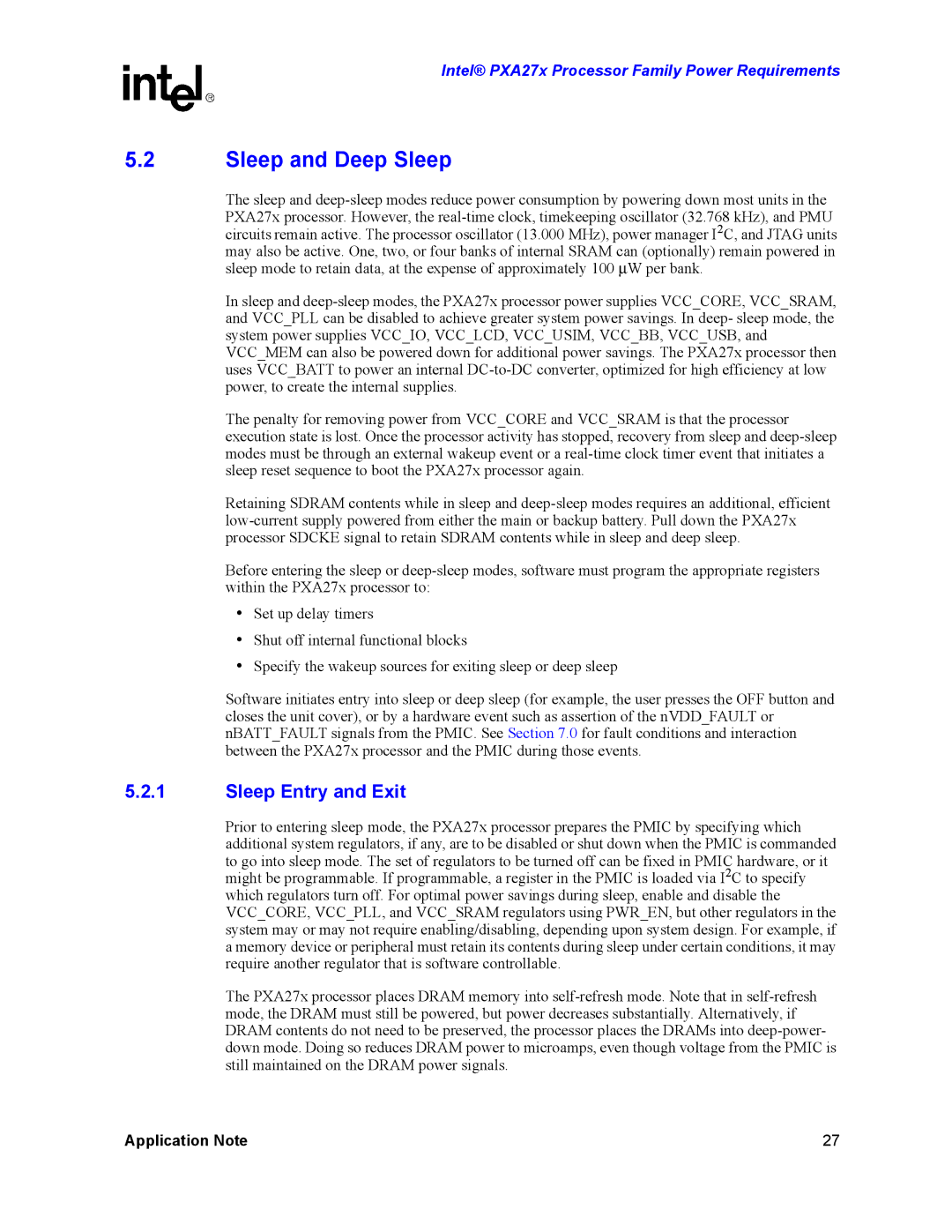Intel® PXA27x Processor Family Power Requirements
5.2Sleep and Deep Sleep
The sleep and
In sleep and
The penalty for removing power from VCC_CORE and VCC_SRAM is that the processor execution state is lost. Once the processor activity has stopped, recovery from sleep and
Retaining SDRAM contents while in sleep and
Before entering the sleep or
•Set up delay timers
•Shut off internal functional blocks
•Specify the wakeup sources for exiting sleep or deep sleep
Software initiates entry into sleep or deep sleep (for example, the user presses the OFF button and closes the unit cover), or by a hardware event such as assertion of the nVDD_FAULT or nBATT_FAULT signals from the PMIC. See Section 7.0 for fault conditions and interaction between the PXA27x processor and the PMIC during those events.
5.2.1Sleep Entry and Exit
Prior to entering sleep mode, the PXA27x processor prepares the PMIC by specifying which additional system regulators, if any, are to be disabled or shut down when the PMIC is commanded to go into sleep mode. The set of regulators to be turned off can be fixed in PMIC hardware, or it might be programmable. If programmable, a register in the PMIC is loaded via I2C to specify which regulators turn off. For optimal power savings during sleep, enable and disable the VCC_CORE, VCC_PLL, and VCC_SRAM regulators using PWR_EN, but other regulators in the system may or may not require enabling/disabling, depending upon system design. For example, if a memory device or peripheral must retain its contents during sleep under certain conditions, it may require another regulator that is software controllable.
The PXA27x processor places DRAM memory into
Application Note | 27 |
